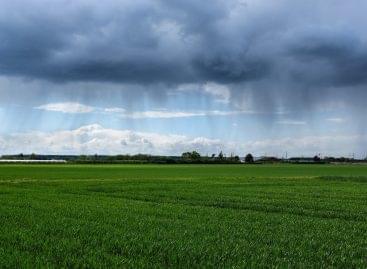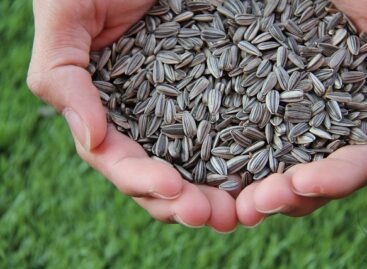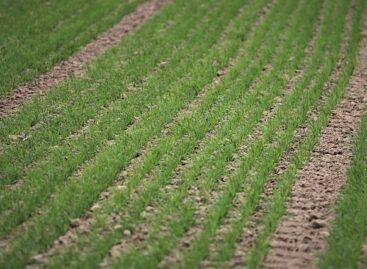Agrometeorology: canola needs precipitation
The dry, warm weather of the past few days was ideal for the maturing rapeseed plants, but at the same time it significantly dried out the soil layer near the surface, even though much more moisture would be needed for the germination and optimal early development of rapeseed, the National Meteorological Service wrote in its agrometeorological analysis on Thursday.

(Photo: Pixabay)
They explained: the sunny, rain-free, warm weather of the last ten days was broken by a cold front that arrived on Wednesday night, from which significant precipitation of 5-20 millimeters fell only in the northwestern part of the country until Thursday morning. The amount of precipitation that has fallen in the last 30 days – with the exception of a few spots affected by heavy downpours – in most parts of the country is far below the usual for this time, in many places less than half of the long-term average fell.
The near-surface layer of the soil has dried up a lot since the rains at the end of August and beginning of September
At the beginning of the month, there was a particularly good water supply, but now the soil has become critically dry in several places in the Great Plain and the southeastern part of Transdanubia, and the middle and deeper layers contain only a little moisture. In recent days, the temperature has been 4-5 degrees higher than usual, and peak values above 30 degrees Celsius were typical throughout the country during the day. They added: the sunny, dry, warm weather characteristic of the first half of September was very good for the ripening of corn and sunflower, these plants no longer need precipitation at this time. In more and more places, the corn is in the phase of full ripening, and in many places you can already see a large part of dry stands. The sunflower is also in the plant drying phase, both plants are characterized by well-developed stands.
Autumn cabbage rape is still being planted
In the first decade of the month, the moisture content of the upper layer of the soil was favorable for the preparation of the seed bed, sowing and germination of the seeds in most parts of the country, but since then the soil has become more and more dry, especially in the Great Plain, abundant precipitation is needed, they noted. During the rest of the week, the weather will be a little more changeable, there will be more clouds compared to the last period, but cold weather is still not expected, and the weather will be mostly dry again. Temperatures will start to rise from the weekend, and values around 30 degrees or slightly below are expected again during the day. Another cold front will arrive next Tuesday, but more heavy, national precipitation is unlikely even then.
MTI
Related news
Agrometeorology: the lands lack rain
🎧 Hallgasd a cikket: Lejátszás Szünet Folytatás Leállítás Nyelv: Auto…
Read more >Sunflower and rapeseed seed prices have decreased
🎧 Hallgasd a cikket: Lejátszás Szünet Folytatás Leállítás Nyelv: Auto…
Read more >Agrometeorology: autumn sowings may have continued to grow in mild weather
🎧 Hallgasd a cikket: Lejátszás Szünet Folytatás Leállítás Nyelv: Auto…
Read more >Related news
Christmas shock in commerce: for the first time, we can pay with bank cards in fewer places
🎧 Hallgasd a cikket: Lejátszás Szünet Folytatás Leállítás Nyelv: Auto…
Read more >Hungarian Confectionery Manufacturers Association: trends in 2025 and prospects for 2026
🎧 Hallgasd a cikket: Lejátszás Szünet Folytatás Leállítás Nyelv: Auto…
Read more >Most grocery chains will be open until noon on December 24th
🎧 Hallgasd a cikket: Lejátszás Szünet Folytatás Leállítás Nyelv: Auto…
Read more >






